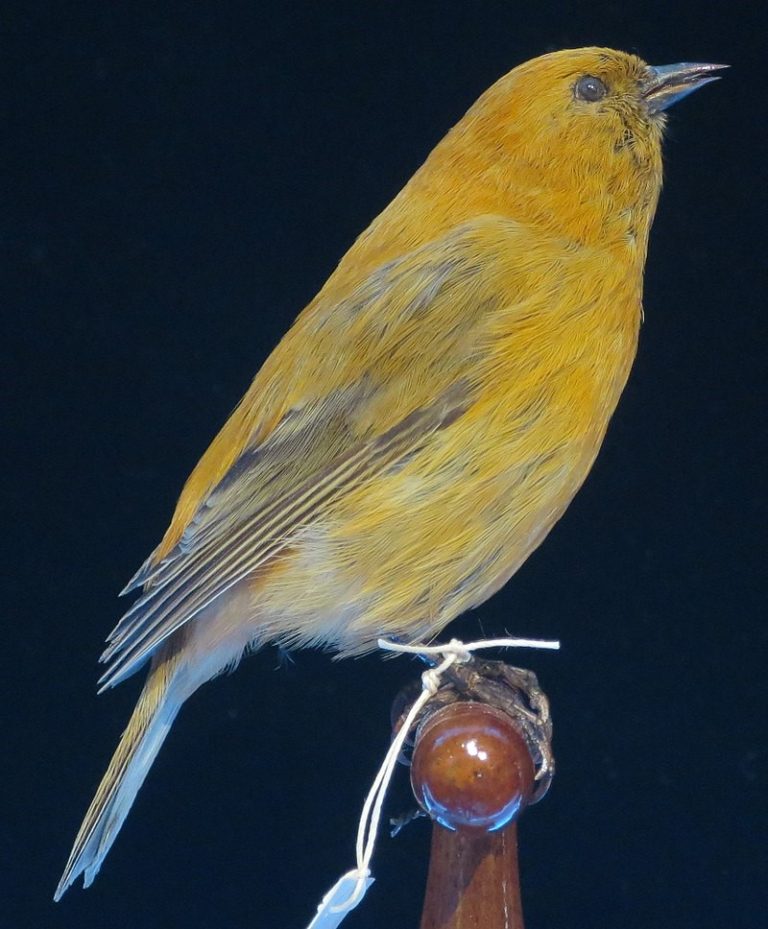Birdfinding.info ⇒ The last confirmed occurrence of Maui Akepa was a set of specimens collected June 10-15, 1901, near Ukulele. The species certainly survived for some years, and possibly many decades, after that, but documentation during the 1900s is sparse. The consensus of researchers seems to be that it survived in small numbers on the northern slopes of Mount Haleakala into the 1980s, and that the last persuasively described sight record occurred in 1988. Surveys in the 1990s yielded audio recordings that were possibly this species.
Maui Akepa †
Loxops ochraceus
Endemic to Maui, but presumed to be extinct.
Inhabits, or inhabited, wet forests from the lowlands up to middle elevations.
Identification
Similar to Hawaii Akepa but bill gray, male plumage pale-orange or yellowish, and female olive-gray.

Maui Akepa, male. Bernice Pauahi Bishop Museum

Maui Akepa, two males and a female (at right). © John Gerrard Keulemans 1900
Notes
Monotypic species. Traditionally considered conspecific with Oahu and Hawaii Akepas, but differed in coloration. Mitochondrial DNA analysis has enabled the conclusion that they were distinct at the species level.
IUCN Red List Status: Critically Endangered (Possibly Extinct).
References
BirdLife International. 2018. Loxops ochraceus. The IUCN Red List of Threatened Species 2018: e.T103824084A130691117. https://dx.doi.org/10.2305/IUCN.UK.2018-2.RLTS.T103824084A130691117.en. (Accessed May 16, 2020.)
Pratt, H.D. 2005. The Hawaiian Honeycreepers: Drepanidinae. Oxford University Press.
Pratt, H.D. 2020. Maui Akepa (Loxops ochraceus). In Handbook of the Birds of the World Alive (J. del Hoyo, A. Elliott, J. Sargatal, D.A. Christie, and E. de Juana, eds.). Lynx Edicions, Barcelona. https://www.hbw.com/node/61440. (Accessed May 9, 2020.)
Pyle, R.L., and P. Pyle. 2017. The Birds of the Hawaiian Islands: Occurrence, History, Distribution, and Status. Version 2 (January 1, 2017). http://hbs.bishopmuseum.org/birds/rlp-monograph/. B.P. Bishop Museum, Honolulu, Hawaii.
